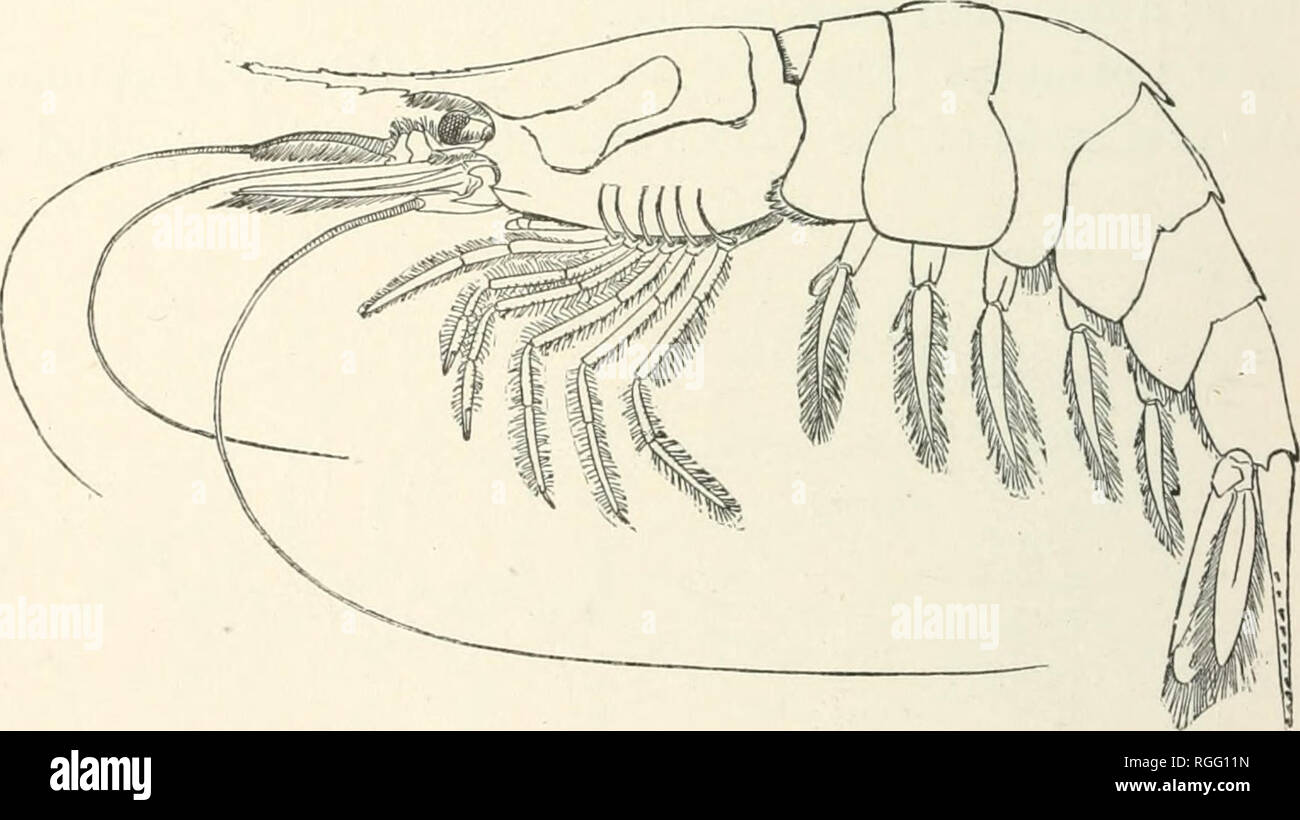. Bulletin of the Museum of Comparative Zoology at Harvard College. Zoology; Zoology. Fig. 244.—Heterocarpus carinatus. '^. (S. I. Smith.) were taken in 200 to 1,000 fathoms ; they are apparently char- acteristic of the fauna at that depth in the West Indian region. The species of the new genus Stylodactylus, dredged from 400 to 500 fathoms, probably represents a new family of Caridea.. Fig. 246.—Acanthephyra Agassizii. . (S. I. Smith.) The oral appendages and branchiae belong to a peculiar type of structure, and the claws of the first and second pairs of legs are very long and slender, with

Image details
Contributor:
Book Worm / Alamy Stock PhotoImage ID:
RGG11NFile size:
7.1 MB (217.3 KB Compressed download)Releases:
Model - no | Property - noDo I need a release?Dimensions:
2108 x 1185 px | 35.7 x 20.1 cm | 14.1 x 7.9 inches | 150dpiMore information:
This image is a public domain image, which means either that copyright has expired in the image or the copyright holder has waived their copyright. Alamy charges you a fee for access to the high resolution copy of the image.
This image could have imperfections as it’s either historical or reportage.
. Bulletin of the Museum of Comparative Zoology at Harvard College. Zoology; Zoology. Fig. 244.—Heterocarpus carinatus. '^. (S. I. Smith.) were taken in 200 to 1, 000 fathoms ; they are apparently char- acteristic of the fauna at that depth in the West Indian region. The species of the new genus Stylodactylus, dredged from 400 to 500 fathoms, probably represents a new family of Caridea.. Fig. 246.—Acanthephyra Agassizii. . (S. I. Smith.) The oral appendages and branchiae belong to a peculiar type of structure, and the claws of the first and second pairs of legs are very long and slender, with slender multiarticulate and hairy digits. Nematocarcinus ensiferus (Fig. 245), of a bright rose- color, from 800 to 1, 400 fathoms, and JV. cursor, from 500. Please note that these images are extracted from scanned page images that may have been digitally enhanced for readability - coloration and appearance of these illustrations may not perfectly resemble the original work.. Harvard University. Museum of Comparative Zoology. Cambridge, Mass. : The Museum